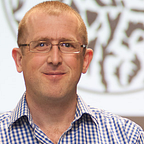Understanding the Dynamic Approach to Wholeness and Living Organisations
In the 1960s, a number of students of physicist David Bohm’s, including Henri Bortoft, took his conceptualisation of wholeness out of quantum physics and into organisational design and change management, using the hologram as a template for thinking in a new way about wholeness.
Each person in an organisation is seen an expression of the organisation as a whole, so the whole organisation comes to expression to some degree through their role in the organisation. If the whole comes to expression in the parts, the way to understand the whole is through the way it is expressed in the parts, instead of trying to stand back to get an overview, and trying to make the parts fit together into a pre-conceived framework.
When you explore the whole organisation in this manner, it can sometimes seem as if you are entering into another dimension of the organisation compared with the usual way of thinking which can often seem quite abstract. What is needed from leadership is the capacity to see from within the whole of the organisation in which we work and live.
It is this dynamic way of seeing which we describe in our book Holonomics: Business Where People and Planet Matter, and which is the same hermeneutical movement of thinking that Gadamer describes in Truth and Method. This dynamical way of seeing is also the same movement upstream that Goethe utilised in his organic understanding of the metamorphosis of plants and the coming-into-being of colour as described in his Theory of Colours.
But one thing Henri always warned about was not to confuse the contents with the container. Don’t confuse the fundamental movement in thinking with the way in which it is expressed in different uses in different philosophies in different eras. In many ways, an organisation is not like a living organic plant, since organisations are created by someone in a very short space of time, and people and resources and processes are brought together under conscious design, as opposed to organisms which have evolved over millions of years.
What we do require, though, is a new organ of perception for understanding how parts belong together, so that the whole organisation, its vision, strategy, brand and essence can come to full expression through the parts. We can say that organisations are living in the same way that Gadamer understood the meaning of a text to always be unfinished, therefore in some manner ‘living’.
To explore this subject in depth, please see The Foundations of Holonomics, a new series of curated lectures on Transition Consciousness providing a deep dive into the teachings and insights of our book Holonomics, allowing you to explore many different but interrelated themes which are so relevant to the uncovering of solutions to the many social, ecological, design and organisational problems we are facing today.
